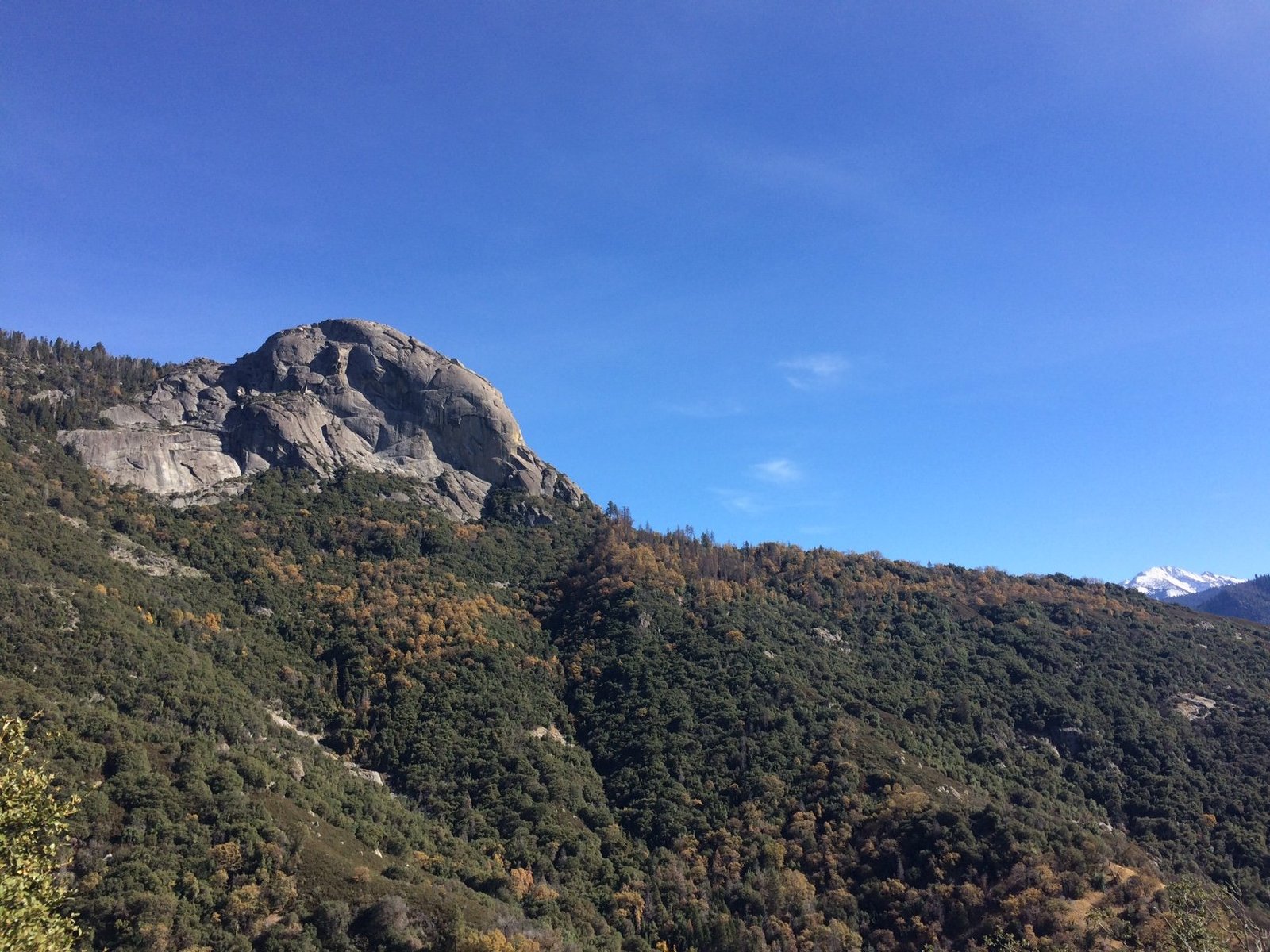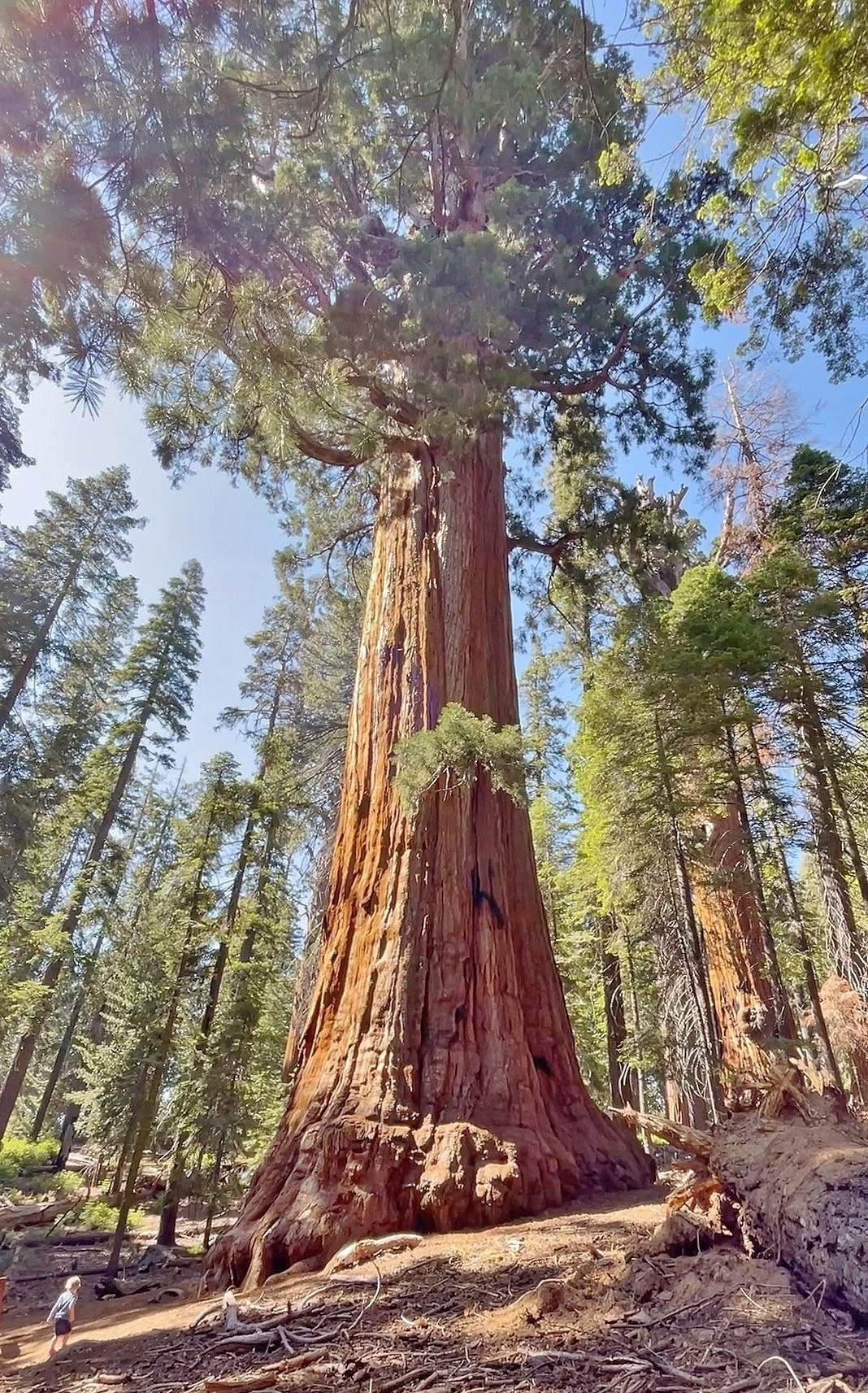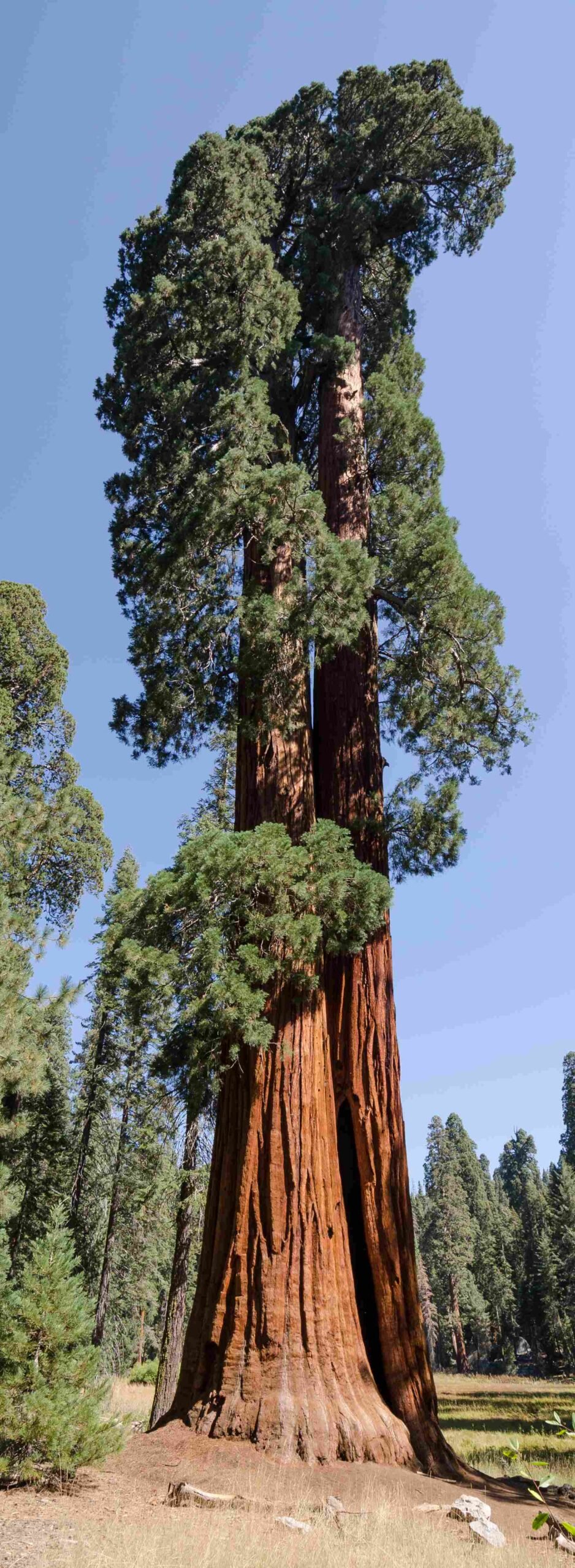The Hart Tree in Sequoia National Park is a towering giant sequoia located in the Redwood Mountain Grove of Kings Canyon National Park, adjacent to Sequoia National Park. Standing at an impressive height of 277.9 feet (84.7 meters), this ancient tree is a testament to the grandeur of nature and the enduring legacy of the giant sequoias. Visitors can access this magnificent specimen via the Redwood Mountain Grove trail, where they can marvel at its immense size and learn about its ecological importance.
What is the Significance of the Hart Tree?

The Hart Tree is one of the many awe-inspiring giant sequoias that call the Sierra Nevada mountains home. Its significance lies not only in its impressive stature but also in its role within the ecosystem and its ability to captivate visitors with its sheer magnitude. As part of the Redwood Mountain Grove, the Hart Tree contributes to the largest contiguous grove of giant sequoias in the world, making it a crucial component of this unique forest ecosystem.
How Tall is the Hart Tree?

The Hart Tree stands at a remarkable height of approximately 277.9 feet (84.7 meters). To put this into perspective, consider the following comparisons:
- It’s about as tall as a 25-story building
- Nearly the length of a football field stood on end
- Roughly twice the height of the Statue of Liberty (without its pedestal)
This impressive height places the Hart Tree among the tallest known giant sequoias, though it falls short of the record holders like Hyperion, the world’s tallest known living tree, which is a coast redwood standing at 380.1 feet (115.92 meters).
Where is the Hart Tree Located?
The Hart Tree is situated within the Redwood Mountain Grove in Kings Canyon National Park. While the exact coordinates are not publicly disclosed to protect the tree, visitors can find it by following these directions:
- Enter Kings Canyon National Park
- Head towards the Redwood Mountain Grove area
- Locate the trailhead for the Redwood Mountain Grove trail
- Hike along the designated path to reach the Hart Tree
The tree’s location in the Sierra Nevada mountains of Fresno County, California, places it in a region known for its diverse flora and fauna, as well as its stunning natural beauty.
How Old is the Hart Tree?
While the exact age of the Hart Tree remains a mystery, we can make educated estimates based on similar giant sequoias in the region. Most giant sequoias in Sequoia and Kings Canyon National Parks are believed to be between 2,000 to 3,000 years old. Some of the most famous trees, like the General Sherman and General Grant, are estimated to be even older, ranging from 3,000 to 4,000 years.
To provide context for the Hart Tree’s potential age, consider this timeline:
| Historical Event | Years Ago |
|---|---|
| Building of the Great Pyramid of Giza | ~4,500 |
| Invention of the wheel | ~5,500 |
| Hart Tree (estimated germination) | 2,000-3,000 |
| Birth of Julius Caesar | ~2,100 |
| Start of the Common Era | ~2,000 |
This puts into perspective the incredible lifespan of these ancient giants and the historical events they have silently witnessed over the millennia.
What are the Best Ways to Experience the Hart Tree?
To fully appreciate the majesty of the Hart Tree and its surrounding grove, consider the following activities and tips:
-
Hiking: The Redwood Mountain Grove trail offers the best access to the Hart Tree. This hike allows you to immerse yourself in the sequoia forest and appreciate the scale of these giants.
-
Photography: Capture the beauty of the Hart Tree and its surroundings. Remember to bring a wide-angle lens to fit the entire tree in your frame.
-
Nature Observation: Take time to observe the ecosystem around the tree. Look for wildlife, understory plants, and the intricate patterns in the tree’s bark.
-
Guided Tours: Check with the park rangers for any available guided tours that might include the Hart Tree. These can provide valuable insights into the tree’s history and ecology.
-
Seasonal Visits: Consider visiting during different seasons to experience the changing beauty of the grove. Spring offers wildflowers, while winter can provide a serene, snow-covered landscape.
What Should Visitors Know Before Visiting the Hart Tree?
Before embarking on your journey to see the Hart Tree, keep these important points in mind:
-
Park Entrance Fees: Ensure you have a valid park pass or are prepared to pay the entrance fee for Kings Canyon National Park.
-
Trail Conditions: Check with park rangers or the visitor center for current trail conditions, especially during winter months when snow may affect accessibility.
-
Leave No Trace: Practice responsible tourism by staying on designated trails, packing out all trash, and not disturbing wildlife or plants.
-
Weather Preparedness: The Sierra Nevada climate can be unpredictable. Dress in layers and bring appropriate gear for potential weather changes.
-
Physical Preparation: The hike to the Hart Tree involves some elevation change and can be strenuous for some visitors. Ensure you’re physically prepared and bring plenty of water.
How Does the Hart Tree Compare to Other Famous Sequoias?
While the Hart Tree is impressive in its own right, it’s natural to wonder how it stacks up against other famous sequoias. Here’s a quick comparison:
| Tree Name | Height | Location |
|---|---|---|
| Hart Tree | 277.9 ft (84.7 m) | Kings Canyon National Park |
| General Sherman | 274.9 ft (83.8 m) | Sequoia National Park |
| General Grant | 268.1 ft (81.7 m) | Kings Canyon National Park |
| President | 240 ft (73 m) | Sequoia National Park |
As you can see, the Hart Tree is actually taller than some of its more famous cousins, though it’s important to note that height is just one measure of a tree’s impressiveness. Factors like trunk volume and age also contribute to a sequoia’s overall grandeur.
What Role Does the Hart Tree Play in the Ecosystem?
The Hart Tree, like all giant sequoias, plays a crucial role in its ecosystem:
-
Carbon Sequestration: Its massive size allows it to store large amounts of carbon, helping to mitigate climate change.
-
Habitat Creation: The tree provides homes and food sources for numerous species of birds, mammals, and insects.
-
Soil Enrichment: As the tree sheds needles and branches, it contributes to the nutrient-rich soil of the forest floor.
-
Water Cycle: The tree helps regulate the local water cycle through transpiration and by capturing fog and precipitation.
-
Fire Ecology: Giant sequoias are adapted to periodic fires, which help clear the forest floor and release seeds from their cones.
Understanding these ecological roles enhances our appreciation for the Hart Tree and underscores the importance of conservation efforts in Sequoia and Kings Canyon National Parks.
In conclusion, the Hart Tree in Sequoia National Park stands as a magnificent example of nature’s grandeur and resilience. Its towering presence in the Redwood Mountain Grove offers visitors a chance to connect with the ancient history of our planet and marvel at the wonders of the natural world. By understanding and appreciating trees like the Hart Tree, we can better recognize the importance of preserving these incredible ecosystems for future generations.
References:
1. National Park Service – Largest Trees in the World
2. National Park Service – Size of the Giant Sequoia
3. Famous Redwoods – Hart Tree

